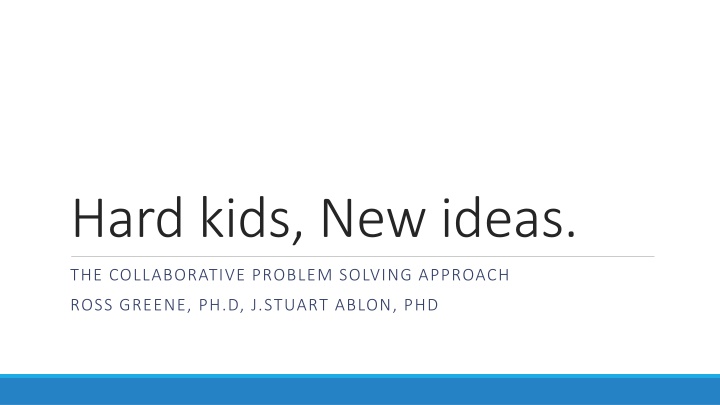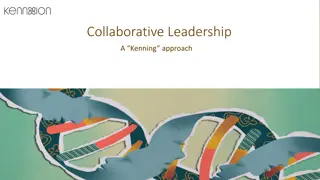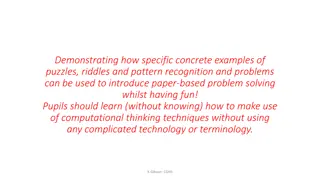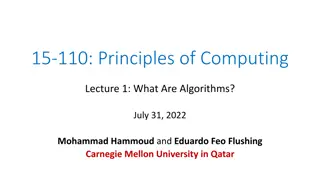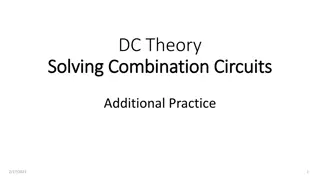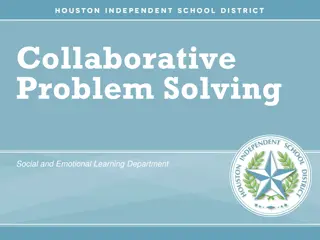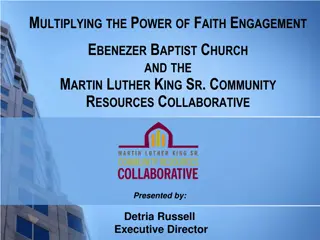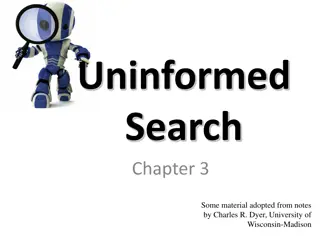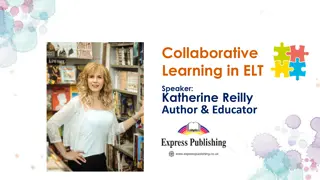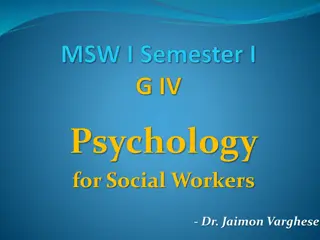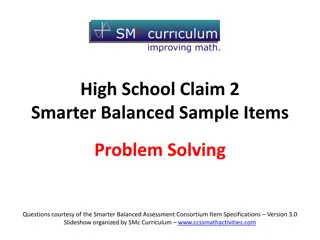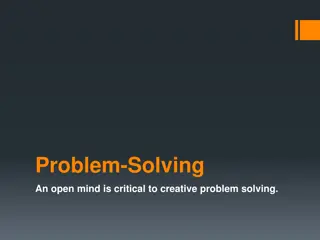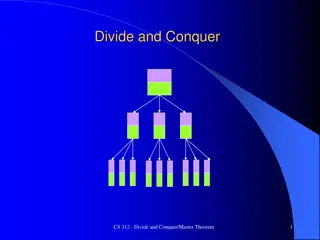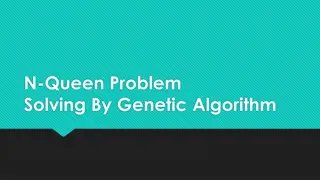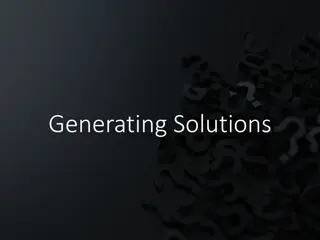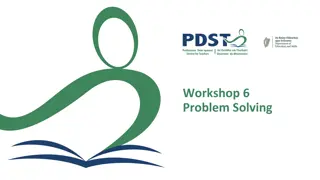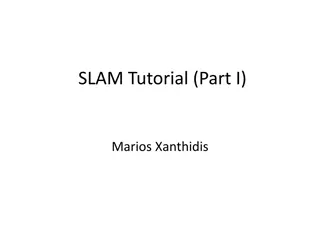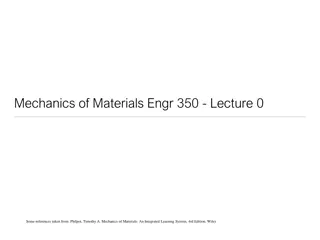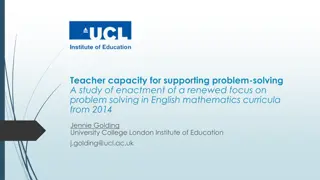Collaborative Problem-Solving Approach for Challenging Behavior
This resource delves into effective strategies for addressing challenging behavior in children, emphasizing the importance of collaboration, identifying lagging skills, and understanding the impact of adverse childhood experiences. By focusing on problem-solving and skill development rather than traditional reward and punishment systems, educators and caregivers can better support children's social and emotional well-being.
Download Presentation

Please find below an Image/Link to download the presentation.
The content on the website is provided AS IS for your information and personal use only. It may not be sold, licensed, or shared on other websites without obtaining consent from the author.If you encounter any issues during the download, it is possible that the publisher has removed the file from their server.
You are allowed to download the files provided on this website for personal or commercial use, subject to the condition that they are used lawfully. All files are the property of their respective owners.
The content on the website is provided AS IS for your information and personal use only. It may not be sold, licensed, or shared on other websites without obtaining consent from the author.
E N D
Presentation Transcript
Hard kids, New ideas. THE COLLABORATIVE PROBLEM SOLVING APPROACH ROSS GREENE, PH.D, J.STUART ABLON, PHD
Philosophical Approach 1) Kids do well if they want to Motivational Approach Level/Reward Systems Punishment produces behavioral change. Student possesses the self driven attributes necessary for behavioral change. Can be effective for non-traumatized, Tier One and some Tier Two children. 2) Kids do well if they can Identification, Emotional Regulation, Skill Retention Kids are delayed in the development of the crucial cognitive skills (Executive Functioning, Language Processing, Emotion Regulation, Cognitive Flexibility and Social Skills) and have difficulty applying them. Adults help to identify lagging skills (why?) and the unsolved problems (who, what, where, when) Proactive and almost exclusively, emphasis place on antecedent events. http://www.livesinthebalance.org/step-one-first-video
Adverse Childhood Experiences (ACEs) Collaborative research between the Centers for Disease Control and Prevention and Kaiser Permanente in San Diego 17,000 Kaiser patients participated in routine health screening Data continues to be analyzed; it reveals staggering proof of the health, social, and economic risks that result from childhood trauma
Why does this work? Surrogate Frontal Lobe Amygdala: emotional center of the brain. Prefrontal Cortex: Organizing, processing, information gathering, consequence recognition (Executive Functioning) Hard kids: Sensory Stimuli Amygdala Majority of our students: Sensory Stimuli Prefrontal Cortex Amygdala
Your Explanation Guides Your Intervention. How you explain a kid s challenging behavior has major implications on how you try to help. If you believe the challenging behavior is due to a lagging skill and an unsolved problem, then rewarding and punishing may not be ideal. Solving problems and teaching skills would make perfect sense.
How does this work? Beginning Steps 1. Relationship; years of psychological research shows behavioral change is most directly impacted by the relationship with the person who is directing and encouraging growth. Spend some time aside from academic support and discipline to get to know the child. https://www.youtube.com/watch?v=g7hq9ujeIwM 2. Understand that challenging behaviors are highly predictable once identified. The episodes or challenging behaviors are a form of a learning disability. 3. Identify Lagging Skills (Thinking Skills Inventory) and choose the two most challenging to your environment. 4. Notice antecedents. 5. Implement strategy, involving the child in the process. 6. Review the Thinking Skills Inventory
How does this work? Conversations with children Plan A: Impose Adult Will (Precision Commands) Plan C: Drop It (Eggshell walking) Plan B: Collaborative Problem Solving (Expectations and Solutions) 1. Empathy (Genuine and specific). 2. Define the problem (Both parties) 3. Solution; Invitation to problem solve.
Empathy Step (Reassurance) 1. Reflective listening 2. Clarifying statements tell me more about that? I don t quite understand. 3.Drilling- Asking the student who, what, where, when of the unsolved problem
Define the Problem * How the unsolved problem is affecting the student * How the unsolved problem is affecting other people
Solution, Invitation to Solve the Problem Inviting the student to solve the problem collaboratively Restatement of the concerns Good solutions must be realistic and mutually satisfactory
Keys to Success Rapport, Rapport, Rapport Reflective listening: Tell me more about that I am hearing you say Ask about what the child is thinking, rather than how they are feeling (we typically know how they are feeling ) Do not engage in Plan B discussions during moments of crisis. Address escalation; problem solve at a later time.
Response to Intervention How do we monitor and track growth? Specify Targeted Skills and Strategies using Plan B *Skill Intervention Sheet Goal: To reduce the frequency, intensity and duration of episodes. Frequency - Episodes per day Intensity - Likert scale measure of intensity (harm to self and others, 1-4, same rater) Duration - Amount of time from beginning to the point of self management. Goal: To improve expected behaviors. *General Behavior Tracker
Examples of Data Collection Methods Simple, short and efficient Skill Intervention Sheet Behavior Tracker Off/On Task Behavior Tracker Frequency of Behavior Tracker Duration of Behavior Tracker
References Livesinthebalance.org livesinthebalance.org Davis School District home page > programs > Family Education Consultation Center > Tough Kid Tool Box
